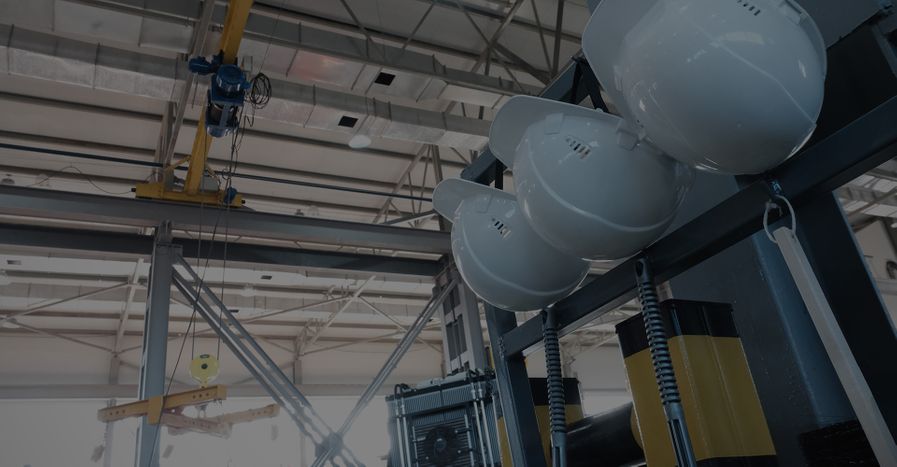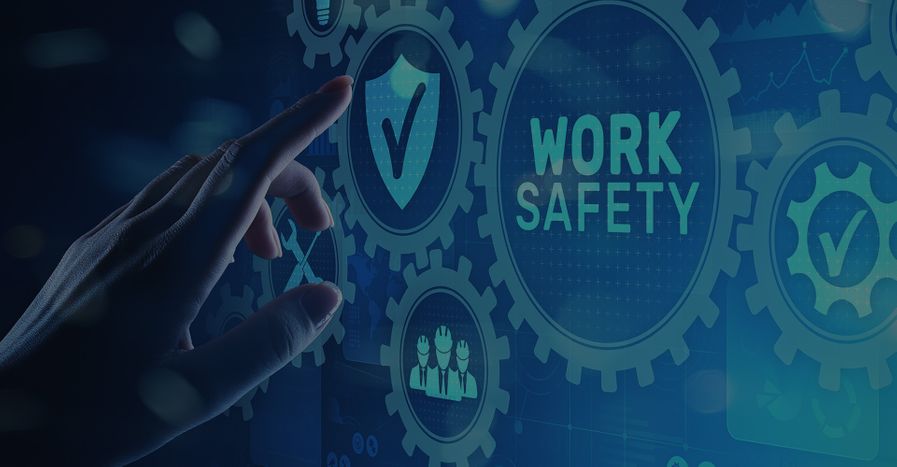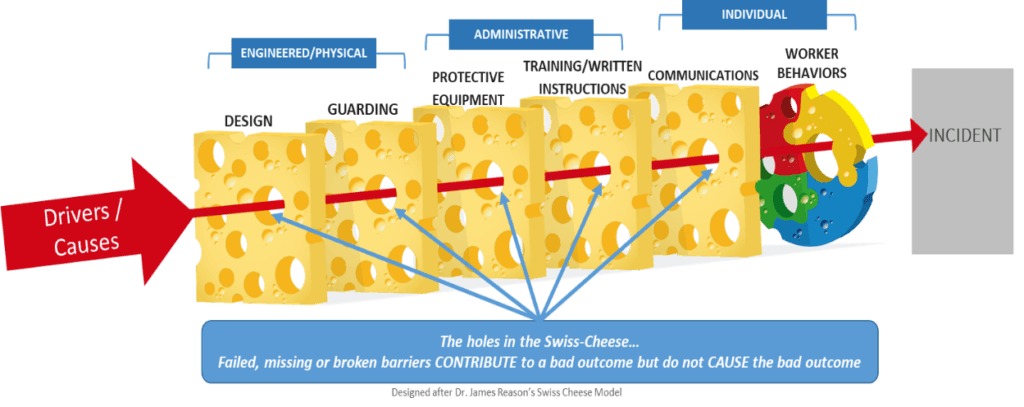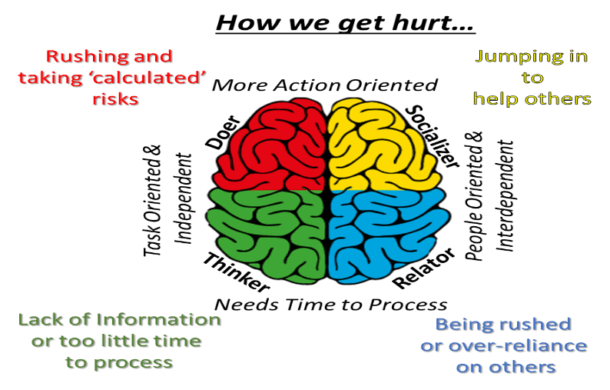Insights
Accelerating Safety Performance: The Benefits of HOP Workshops
As an organization committed to operational excellence, we at Fisher Improvement Technologies (FIT) understand that safety is not just a priority—it is a value embedded in every task. Our unique approach moves beyond conventional safety metrics to focus on Human and Organizational Performance (HOP). We see human error as a symptom of flawed systems, not a failure of character. To truly advance occupational safety, we introduce clients to the powerful, transformative benefits of dedicated HOP workshops.
moreTraining Frontline Supervisors in HOP: Key Skills and Techniques
Frontline supervisors are the critical link in any successful safety culture. They are the ones who translate high-level strategy into daily practice. At Fisher Improvement Technologies, we've seen firsthand that equipping these leaders with the right skills is the key to operational excellence. This is especially true when implementing a robust Human and Organizational Performance (HOP) framework.
moreThe Intersection of HOP and Continuous Improvement in Organizations
At Fisher Improvement Technologies, we often see organizations pursue operational excellence through two powerful, but unfortunately separate, avenues: continuous improvement and Human and Organizational Performance (HOP). While continuous improvement methodologies masterfully refine processes, HOP provides a deep understanding of the human factors that drive success. We believe the true potential for transformative workplace safety and efficiency is unlocked only when these two disciplines intersect.
moreBuilding Error-Tolerant Systems: Best Practices for Organizations
In complex operational environments, human error is inevitable. The key to safety and efficiency is not eliminating error, but building systems that can tolerate it. At Fisher Improvement Technologies, we specialize in creating resilience. Explore our guide to learn more about these critical systems and how they can strengthen your organization.
moreA Practical Guide to HOP-Based Cause Analysis
When an incident occurs, the focus is often on finding fault. At Fisher Improvement Technologies, we champion a different approach rooted in Human and Organizational Performance (HOP), which shifts the goal from blame to genuine learning. Explore how you can conduct a more effective and insightful cause analysis.
moreIntegrating HOP with Existing Safety Management Systems
Many organizations have robust safety management systems (SMS), yet still face recurring challenges. The key to unlocking the next level of worksite safety lies in integrating Human and Organizational Performance (HOP) principles. This approach shifts the focus from blaming individuals to understanding and improving the systems they work within, creating a more resilient and proactive safety culture.
moreSuccessful HOP Implementations in Various Industries
At Fisher Improvement Technologies, our work is centered on the belief that a proactive approach to human and organizational performance is the key to lasting operational excellence. While often associated with a few specific sectors, the principles of HOP are universally applicable. We have seen firsthand how this philosophy transforms workplace cultures, moving away from blame and toward systemic improvement. By focusing on the conditions that lead to error rather than the individual who made the mistake, organizations in diverse fields can dramatically enhance occupational safety and achieve superior performance management.
moreCreating HOP Champions: The Importance of Training HOP Advocates
At Fisher Improvement Technologies, we know that true operational excellence is built on a foundation of proactive safety and a deep understanding of human factors. It’s not enough to simply implement a system; you need to cultivate a culture where every team member is empowered to be a part of the solution. This is why we believe that training dedicated Human and Organizational Performance (HOP) advocates is the single most critical step in a sustainable safety strategy.
moreThe Role of Frontline Workers in Implementing HOP Strategies
At Fisher Improvement Technologies, we champion a foundational truth of operational excellence: successful human and organizational performance (HOP) is not merely dictated from the boardroom; it is built and sustained on the front lines. Shifting from a top-down compliance mindset to one of collective ownership is paramount. Understanding the indispensable role of frontline workers in implementing HOP strategies is the most critical step toward creating a workplace that is not only safer but also more adaptive and efficient.
moreUnderstanding Human and Organizational Performance: A Comprehensive Introduction
For decades, the pursuit of safety and operational excellence has been a cornerstone of successful organizations. Yet, traditional approaches often faltered, focusing predominantly on individual accountability and disciplinary action when things went wrong. This persistent challenge paved the way for a transformative shift in thinking: Human and Organizational Performance (HOP). HOP is not just another safety program; it's a fundamental paradigm shift that redefines our understanding of human error, organizational resilience, and the intricate relationship between them.
moreHow HOP Principles Can Transform Workplace Safety Culture
At Fisher Improvement Technologies (FIT), we believe that a robust safety culture is essential for operational excellence. One of the pivotal methodologies that can significantly enhance workplace safety is Human & Organizational Performance (HOP). This blog delves into how the implementation of HOP principles can transform your organization’s safety culture, leading to improved employee engagement and reduced errors.
moreHuman Errors in the Workplace and How to Minimize Them
In today's work environments, mistakes and human errors are inevitable. Regardless of the industry, these errors can lead to significant consequences, including injuries, fatalities, and decreased productivity. At Fisher Improvement Technologies (FIT), we understand the critical importance of minimizing these errors to enhance human and organizational performance. This blog will explore various strategies to reduce human errors in the workplace and improve overall workplace safety and occupational safety.
moreHow to Optimize Day-to-Day Operations for Long-Term Success
In today’s fast-paced business environment, optimizing day-to-day operations is crucial for achieving long-term success. At Fisher Improvement Technologies, we advocate for an integrated approach that ties together workplace safety, performance management systems, and effective operational strategies. A well-structured optimization plan can enhance workplace safety, improve efficiency, and increase overall productivity. Here’s how to achieve this:
moreThe Role of Communication in Enhancing Workplace Safety
At Fisher Improvement Technologies, we believe that effective communication is the cornerstone of workplace safety. In environments where hazards are prevalent, the ability to share crucial information swiftly and accurately can make the difference between safety and disaster. By fostering clear communication channels among employees, organizations can proactively manage risks, bolster team cohesion, and create a culture of safety that protects everyone.
moreCreating Effective Occupational Safety Training Programs for Diverse Teams
Creating an effective occupational safety training program is crucial to ensuring the well-being of all employees, especially in diverse teams. With varying backgrounds, experiences, and learning styles, it's essential to tailor safety training to meet the needs of everyone. At Fisher Improvement Technologies (FIT), we understand the challenges organizations face when developing training programs that not only meet compliance standards but also foster a culture of safety. In this blog, we’ll discuss how to create a training program that leads to measurable improvements in workplace safety.
moreIntegrating HOP into Existing Organizational Frameworks
Human and Organizational Performance (HOP) is revolutionizing how companies approach workplace safety. Fisher Improvement Technologies specializes in integrating HOP into existing frameworks, helping organizations reduce errors and improve performance. Our approach leverages the science of human error reduction, cause analysis, and effective procedure writing, ensuring that companies see a measurable decrease in fatalities and life-altering injuries. In this post, we’ll explore how HOP can seamlessly integrate into your current systems and why it’s essential for ensuring optimal occupational safety.
moreWhy Choose Our Human and Organizational Performance Workshops?
At Fisher Improvement Technologies (FIT), we understand that optimizing human and organizational performance is crucial for enhancing safety and efficiency in the workplace. Our Human and Organizational Performance (HOP) workshops are tailored to equip businesses with the necessary tools to address errors, violations, and safety hazards effectively.
moreEffective Strategies for Safety Hazard Reduction
At Fisher Improvement Technologies (FIT), we understand the critical importance of workplace safety and the need for effective strategies to minimize hazards. Our dedication to occupational safety is founded on years of experience and commitment to reducing fatalities and serious injuries. Here, we present essential strategies to enhance safety within your operations while optimizing performance.
moreBuilding a Resilient Workforce: Strategies for Adapting to Change
In today’s rapidly evolving business environment, organizations must prioritize building a resilient workforce that can effectively adapt to change. Resilience not only enhances employee well-being but also boosts overall operational performance. Read more for four effective strategies to foster resilience within your workforce.
moreMaximizing Safety and Efficiency by Integrating HOP
Integrating Human and Organizational Performance (HOP) into existing organizational frameworks can significantly enhance safety and efficiency. At Fisher Improvement Technologies, we understand that this integration is not merely a procedural change but a transformative shift in organizational mindset and behavior. Here are four impactful considerations for successfully implementing HOP in your organization.
moreThe Role of Communication in Enhancing Workplace Safety
Effective communication in the workplace plays a vital role in enhancing overall safety and productivity. At Fisher Improvement Technologies, we understand the importance of clear and concise communication in creating a safe work environment. Learn more about a few key considerations when it comes to the role of communication in enhancing workplace safety below, then explore our services today.
moreOur Human and Organizational Performance Workshops
At Fisher Improvement Technologies, our Human and Organizational Performance (HOP) Workshops are tailored to elevate employee performance and organizational productivity. By honing in on human behavior, these workshops are crafted to cultivate a safer work atmosphere, enhance communication, and bolster overall efficiency within the workplace.
moreThe Impact of Organizational Safety on Employee Well-Being
Organizational safety plays a pivotal role in shaping the well-being of employees. A commitment to creating a safe work environment not only safeguards physical health but also significantly influences human and organizational performance. By prioritizing safety measures, companies can foster a culture of trust, productivity, and overall employee welfare.
moreMaximizing Task Performance: A Guide to Operational Excellence
In the ever-evolving landscape of business operations, maximizing task performance is crucial for sustainable growth and success. The key to achieving operational excellence lies in understanding the intricate dynamics of human and organizational performance, implementing a robust performance management system, and optimizing operations to streamline efficiencies.
moreUnlock the Potential of Human and Organizational Performance with FIT Online
In today’s fast-paced work environments, enhancing human and organizational performance is crucial. At Fisher Improvement Technologies, we understand that workplace safety and efficiency are paramount. That's why we've developed FIT Online, a comprehensive platform designed to help elevate your team's performance and safety standards through expert-driven training and resources.
From access to free content and curated purchased content to custom courses and networking opportunities, FIT Online is your one-stop shop for all of your workplace safety and performance needs.
moreFIT Training Programs that Drive Organizational Change
In today's rapidly evolving business landscape, where change is constant and competition is fierce, achieving excellence in workplace safety and performance management is not just a goal; it's a necessity for survival and growth. In this dynamic environment, organizations must continuously adapt and innovate to stay ahead of the curve. One of the most effective ways to drive this evolution is through transformative training workshops. Fisher Improvement Technologies (FIT) stands at the forefront of this movement, offering a diverse array of workshops meticulously designed to revolutionize organizational dynamics and fortify workplace safety.
moreThe Role of Communication in Enhancing Workplace Safety
In today's fast-paced and dynamic work environments, ensuring the safety of employees is paramount. Effective communication plays a crucial role in enhancing workplace safety by promoting a culture of awareness and accountability. Fisher Improvement Technologies (FIT), located in Concord, NC, a leading provider of safety courses and occupational safety training, recognizes the significance of communication in fostering human and organizational performance. In this blog, we will delve into how communication contributes to enhancing workplace safety and the benefits it brings to organizations and their employees.
moreIntegrating HOP Into Existing Organizational Frameworks
At Fisher Improvement Technologies, we know that in fast-paced and ever-changing business landscapes, organizations are continually seeking ways to improve efficiency and safety. The Human and Organizational Performance (HOP) framework offers a new perspective on achieving these goals. By integrating HOP into existing organizational frameworks, companies can effectively address operational challenges and cultivate a culture of continuous improvement. In this blog post, we will discuss four key things to know about integrating HOP into your organization. Learn more below, then contact us today!
moreRisk Mitigation Strategies Every Organization Should Know
In the dynamic landscape of modern business, ensuring the safety of your workforce and optimizing operational processes is paramount. Human and Organizational Performance (HOP) emerges as a key framework to systematically analyze processes and employee behaviors, maximizing occupational safety measures. Fisher Improvement Technologies (FIT), with over 30 years of expertise, is dedicated to assisting companies in reducing safety hazards and optimizing day-to-day operations. In this blog, we'll explore crucial risk mitigation strategies that every organization, whether small or large, should be well-versed in for enhanced human and organizational performance, workplace safety, and operations optimization.
moreDiscover FIT: Join The Upcoming Operational Excellence Conference
Join Fisher Improvement Technologies for our Operational Excellence Conference on January 17th and 18th, 2024! Designed for optimal networking opportunities with like-minded people who are currently deploying FIT technologies in operational excellence, safety, quality, and production.
morePrevent Workplace Injury With Four Simple Steps
Creating and maintaining a safe work environment is of utmost importance for any organization. Workplace injuries not only impact the well-being of employees but also have significant financial and operational consequences for businesses. By implementing proactive measures, organizations can minimize the risk of accidents and foster a culture of safety. In this blog, we will explore four simple steps that can help prevent workplace injuries and promote a safe working environment.
For expert guidance and support in implementing these measures, you can rely on Fisher Improvement Technologies, a renowned provider of performance improvement solutions. With our expertise in reducing fatalities and serious injuries, we can assist your organization in creating a safety-centric workplace. Get in touch with us today to learn more about how we can help you!
more4 Preventative Steps to Avoid Safety Issues in the Workplace
Rob Fisher
Welcome to Fisher Improvement Technologies, your dedicated partner in fostering a safer work environment through comprehensive Environmental Health and Safety (EHS) solutions. Workplace safety is of utmost importance, and we understand the critical role it plays in ensuring the well-being of employees and the success of businesses. In this article, we will explore four preventative steps that can help your organization avoid safety issues and proactively enhance your EHS performance. By leveraging our expertise in Corrective Action Programs (CAPs) and incident risk assessment, you can create a workplace that prioritizes safety and empowers your workforce.
moreThe Top 5 Error Traps (And How We Can Help)
Rob Fisher
At Fisher Improvement Technologies, we understand that no business is immune to errors, and that even the best teams can make mistakes. It’s not just about what went wrong, but how you address the issue, because when it comes to running a successful business, avoiding error traps should be a top priority. To help organizations reduce the likelihood of error traps occurring, Fisher Improvement Technologies offers Process & Procedure Excellence workshops to provide initial training for process writers, analysts, and individuals who lead written guidance teams. Learn more below, read testimonials, explore our client list, then contact us today.
moreHow to Enhance Cause Analysis Procedures
Rob Fisher
Cause analysis procedures are important for understanding the root causes of issues, defects, and other problems that may arise in the workplace. Enhancing these procedures with Fisher Improvement Technologies, can help to reduce the time and cost of resolving these problems.
moreDeep Dive Into Our Virtual Coaching Courses
Rob Fisher
Has your organization been struggling to find solutions for improving performance? Are you looking for a reliable company that can provide you with the necessary tools and resources? Look no further than Fisher Improvement Technologies, Inc. (FIT)! Our virtual coaching can include topics such as Human and Organizational Performance, Advanced Error Reduction, executive and leadership coaching, personal coaching, and high team performance. We’re proud to be a Native American-owned and veteran-owned business, and we’re dedicated to helping our clients achieve their goals through our virtual coaching sessions. We want to assure you that our experience, expertise, and commitment to your success will provide you with the best results possible. In this blog post, we’ll dive deep into our virtual coaching so you can see what we’re all about. Partner with us and get the results you’ve been looking for!
moreHow We Can Help Implement A Corrective Action Plan
Rick Foote
When it comes to your business, there are a lot of things you can do to improve performance and avoid potential accidents. But sometimes, accidents happen despite our best efforts. If an accident does occur, it’s essential to have a corrective action plan in place so that you can quickly address the issue while preventing it from happening again. There’s no question that a corrective action plan can be daunting. But with the right partner, you can develop an effective corrective action plan that will help improve your organization’s performance!
Here at Fisher Improvement Technologies (FIT), we have over a decade of experience helping our clients improve their safety records. We specialize in root cause analysis and developing corrective action plans that can make a real difference. We’ll work with you to understand the problem and create a plan that addresses the root cause of the issue. Don’t wait. Reach out to Fisher Improvement Technologies today!
moreWhy We Have the Highest Quality Work Safety Courses
Rob Fisher
When it comes to workplace safety courses, Fisher Improvement Technologies is the best in the business. We have a team of experts who develop workplace safety training programs that are designed to reduce human error. Our courses are based on real-world examples and case studies, so you can be sure that you’re getting the most accurate and up-to-date information. Keep reading to learn more about why our workplace safety training courses are second-to-none, and sign-up for one of our virtual workshops today!
moreThe Benefits of Our Advanced Root Cause Analysis Workshop
Rob Fisher
Do you need to improve your workplace safety? Are there accidents occurring that are eerily similar to ones you’ve experience in the past? If so, our Advanced Root Cause Analysis Workshop at Fisher Improvement Technologies is the perfect FIT for you and your team. This workshop is designed to help you find and fix the root causes of accidents and safety incidents in the workplace. Keep reading to learn more about the benefits of taking this workshop, and contact us today to get started.
moreThe Difference Between Human and Organizational Performance & Behavior-Based Safety
Rob Fisher
We at Fisher Improvement Technologies take a comprehensive approach to improving human and organizational performance. In today’s blog post, we’re breaking down the difference between human and organizational performance and behavior-based safety. If you’re interested in seeing how Fisher Improvement Technologies can help make your business a safer place to work, get in touch.
morePractical Application of Work Safety Practices
Rob Fisher
Workplace health and safety is one of the most important aspects of any business. It’s not just about having a safe work environment — it’s also about protecting your workers from injury. Fisher Improvement Technologies is here with some practical applications for health and safety in the workplace so you can protect your employees and increase productivity!
moreTake Virtual Work Safety Classes Today!
Rob Fisher
Do you know if human error is impacting your business? When you sign up for our virtual work safety classes, the team at Fisher Improvement Technologies is here to help you improve your health and safety procedures and reduce your risk of incident.
Learn more about our virtual work safety classes and sign up for one of our classes today!
moreOur Top Services for Improving Work Safety
Rob Fisher
The general work environment does so much when it comes to productivity and efficiency in any industry. So giving everyone working in the organization a safe working environment works in the favor of the company and the workers. FIT makes use of four major services in helping companies achieve safety at work. Read on to find out more!
moreIdentify Gaps That Impede the Achievement of Excellence
Rob Fisher
We all want to be successful, however, it is clear that not everyone gets to achieve their definition of success or excellence. Some common reasons why many people don’t achieve optimal success is not having a clear goal, and failing to mitigate risks or obstacles. In order for you to get where you want, you must understand the benefits of a corrective action program that will help you set a working routine that should help you get there. Join us as we discuss some of the things that may get into your way of achieving excellence, and how to overcome them.
moreWork Safety Protection for Small Businesses
Rob Fisher
Want to make measurable improvements in performance and reap sustainable, long-term results for your organization when it comes to error reduction? Allow us to introduce to you the AERO system! This task-based system helps individuals become aware of and better manage their personal tendencies to enable more effective workplace interactions. The system is designed to improve workplace safety, quality, efficiency, and effectiveness. Sounds interesting? Fisher Improvement Technology offers a full suite of online training solutions that help save lives by reducing work-related errors and mistakes in your organization.
Workplace Health and Safety Workshops Available Now
moreReduce Workplace Injury with 4 Steps
Rob Fisher
Employee injuries can be devastating for businesses, especially small businesses. While worker’s compensation insurance will be able to take care of medical costs for the employee, your business will have to absorb costs for lost productivity, training replacement, and more.
The best way to minimize the cost of workplace injuries is to prevent accidents from happening in the first place. Follow the steps below to reduce the risk of injury in your workplace.
Fisher Improvement Technologies (FIT) provides virtual coaching and online root cause analysis workshops to help you improve workplace safety and health.
Workplace Health and Safety Workshops Available Now
moreLearn From Free Content With FIT Online
Rob Fisher
Your One-Stop Shop For Error Reduction, Cause Analysis, Effective Written Guidance, & More
Fisher Improvement Technologies (FIT) provides a holistic spectrum of free content to help your organizations and individuals immediately improve performance. FIT is dedicated to consistently adding new free content to FIT online as well as online training courses and virtual instructor-led workshops.
FIT Online provides an opportunity for networking and professional development, giving users direct access to globally recognized mentors and consultants. Use FIT Online’s message boards to ask your questions, share knowledge, network, and make suggestions for new content. Do you represent a larger organization? Contact FIT directly to get help developing a larger organizational performance program deployment. We will customize an approach tailored for your needs.
moreThe 4 Steps to Workplace Safety
Rob Fisher
Robservation 29 – How fast is too fast?
Rob Fisher
Hello followers and colleagues. I hope this finds you all staying well and using some of our time to reflect and energize for the future. This Robservation is difficult. I entitled it “how fast is too fast,” but it is more about the speed at which we try to manage risk, errors, and defenses.
moreRobservation 28 – Overcoming leaders that have already solved a problem in their head
Rob Fisher
Hi, and welcome to the next Robservation. In today’s discussion, I want to talk about one of the major roadblocks to effective organizational problem solving, even as deep as incident analysis.
moreRobservation 27 – Using Personal Intervention as Leaders
Rob Fisher
We have been talking a lot recently about how leader language and behaviors shape an organizations’ ability to improve. I even heard a recent podcast that talked about how the organization in question had pushed HOP principles out to the field, but the leadership wasn’t actively engaged. That, by the way, is one of the Top 5 HOP deployment errors and has been for years. Those of you who know us well know that we at FIT don’t even engage beyond the initial Senior Leader contact unless the leaders show substantive changes in what they know, and what they do, related to deploying and integrating HOP concepts.
moreRobservation 26 – Managing VUCA
Rob Fisher
A term we have heard a lot of lately in business, and in life that describes our current times is VUCA. It stands for Volatility, Uncertainty, Complexity, and Ambiguity. I think we can all agree that whether we are staying at home or essential workers on the front lines, these four terms in the aggregate pretty well describe what we are living through
moreRobservation 25 – The Importance of Values Based Engagements
Rob Fisher
For decades now, we have been told how important employee engagement is. Companies do surveys, and they do corrective actions if the surveys say employee engagement is too low, they give refreshers on how employees should engage… it goes on and on. What I want to talk about today is LEADER engagement, more specifically, how leaders engage to ensure that there are shared visions and values set amongst the leadership and the workforce.
moreOverconfidence
Rob Fisher
Dan O’Brien was as close as you’ll ever get to a sure bet for winning a gold medal at the 1992 Olympics. At the 1991 World Championships, he’d posted the top score in five of the ten events comprising the men’s decathlon. In contrast, none of the 26 world-class athletes competing against him won more than a single event. Sportswear giant Reebok’s confidence in Dan was so high that they spent over $25 million on an advertising campaign following his path to Olympic glory. Imagine everyone’s surprise when Dan didn’t make the US Olympic Team!
During the Olympic Team trials, Dan was winning by a comfortable margin heading into the pole vault. A successful vault at the initial height of 14’ 5 1/4” would have landed him in second place overall with two events remaining. Not a bad place to be, considering the top three finishers would make the team. Surprisingly, Dan waited until the bar reached 15’ 9” before making his first attempt. That’s the height he routinely opened at. Heck, he’d even cleared 16’ 1” during warm-ups earlier that day.
You’ve probably already guessed what happened. Dan missed all three attempts at 15’ 9” and finished in 11th place overall. He later said, “If I had to do it again, I would still come in at 15’ 9”, just like I do every day in practice. I believe that’s a safe height for me. I believe I can go out and make it every day. Except today.”
moreAvoiding ‘Groundhog Day’ – Principle #5
Rob Fisher
Today’s blog will wrap up this series on successfully resolving issues the first time around, thereby avoiding reliving bad days like Bill Murray’s character Phil Connors in the comedy Groundhog Day. We’ve covered the first four principles below…so on to #5!
- Find the REAL source of the problem
- Don’t assume the problem is isolated
- Identify solid long-term fixes, rather than band-aids
- Implement fixes promptly and correctly
- Ensure fixes remain in place until no longer needed
Organizations tend to have short attention spans. Once we’ve stopped the bleeding from one crisis we’ll move on to the next, often forgetting to keep the tourniquet tightened. And now our old crisis reemerges as a new, sometimes larger one. I saw this happen at a manufacturing company for which I was performing a cause analysis on a costly product quality issue. Procedure changes the company implemented in response to a prior occurrence had been removed during a subsequent revision by an individual who was unaware of their origin and intent. While the quality issue was caught internally the first time around, defective products had escaped to a customer this time and created a much bigger problem for everyone!
moreAvoiding ‘Groundhog Day’ – Principle #4
Rob Fisher
Let’s continue our series on the following principles for resolving issues the first time around, thereby avoiding the unpleasant experience of weatherman Phil Connors in the best comedy ever made (in 1993, anyway), Groundhog Day:
- Find the REAL source of the problem
- Don’t assume the problem is isolated
- Identify solid long-term fixes, rather than band-aids
- Implement fixes promptly and correctly
- Ensure fixes remain in place until no longer needed
Today’s blog elaborates on Principle #4: Implement fixes promptly and correctly.
One of the more unpleasant situations an organization can experience is having an incident recur. It’s particularly disheartening when the incident recurs AFTER we’ve identified Corrective Actions for the previous occurrence but BEFORE we’ve implemented them. It’s like we’ve left our front door cracked open for a moment and something undesirable wandered in!
It’s a given that Corrective Actions robust enough to permanently reduce the risk of incident recurrence can rarely be implemented overnight. For example, an equipment modification can take months to design, approve, install, and test. Even a seemingly minor procedure revision can take days to roll out if numerous individuals on multiple shifts will need to be trained on the changes. Since we can’t just wave a magic wand and instantly make things happen, we’ll need to pick Corrective Action due dates that make sense based upon three key factors: 1) the level of effort required to develop and implement the action; 2) the risk posed to the organization if the incident recurs; and, 3) the existence of equivalent or greater risks that are competing for our organization’s limited resources. Careful consideration of these three factors necessitates the active involvement of management and impacted stakeholders when developing the Corrective Action plan, rather than simply relying on the team who completed the incident’s cause analysis to come up with solutions.
moreAvoiding ‘Groundhog Day’ – Principle #3
Rob Fisher
In this series, I’m covering five principles that will help organizations like yours avoid repeating bad days, such as those experienced by Bill Murray’s character Phil Connors in 1993’s groundbreaking comedy Groundhog Day. They are:
1. Find the REAL source of the problem
2. Don’t assume the problem is isolated
3. Identify solid long-term fixes, rather than band-aids
4. Implement fixes promptly and correctly
5. Ensure fixes remain in place until no longer needed
Today’s blog will touch on Principle #3: Identify solid long-term fixes, rather than band-aids.
Several years ago, a manufacturing company shipped product to a customer with surface defects exceeding the allowable tolerance. The team tasked with determining how and why this occurred quickly learned that this ‘escape’ of non-conforming product was just the latest in a series. The organization’s response to those prior occurrences generally consisted of warning whichever quality inspector hadn’t caught the defects that they’d better inspect closer and harder, as well as telling their co-inspectors to do the same. This approach, which obviously wasn’t working, didn’t account for the fact that the inspectors, being human and all, we’re only capable of detecting about 75-80% of the defects that were just large enough to exceed the limit. And that’s under optimum conditions, which these weren’t. The team found that the lighting on the inspection table didn’t meet minimum standards for visual inspections AND the inspection was being performed in a distractive environment right next to a high traffic walkway AND the inspectors were zoning out due to performing repetitive inspection tasks for extended periods AND the inspection table wasn’t indexed such that the inspectors knew when the cylindrical product had been fully rotated and all surfaces inspected. More importantly, the team found that far more attention had been given to sanctioning the inspectors than on finding and eliminating the source of the defects that were challenging them. Surgery was needed to address this repetitive problem, not band-aids!
moreEssential Leadership Cycle Podcast – Episode 10
Rob Fisher
Welcome to episode 10 of the ELC podcast. I am your host and intentional leader, Rob Fisher, coming to you from the AEROhp.com Studios in the FIT Center for Excellence, here in Concord, NC!
moreEssential Leadership Cycle Podcast – Episode 9
Rob Fisher
Welcome to episode 9 of the ELC podcast. I am your host and intentional leader, Rob Fisher, coming to you from the AEROhp.com Studios in the FIT Center for Excellence, here in Concord, NC!
moreEssential Leadership Cycle Podcast – Episode 8
Rob Fisher
Welcome to episode 8 of the ELC podcast. I am your host and intentional leader, Rob Fisher, coming to you from the AEROhp.com Studios in the FIT Center for Excellence, here in Concord, NC!
moreAvoiding ‘Groundhog Day’ – Principle #2
Rob Fisher
For this series, I’ve drawn inspiration from the comedy Groundhog Day, which was released by Columbia Pictures in 1993. In this classic movie (classic to me, anyway), cranky weatherman Phil Connors finds himself reliving the same bad experiences over and over.
In my first installment, I introduced the following principles that enable organizations like yours to put problems behind them the first time, thereby avoiding Phil’s experience:
- Find the REAL source of the problem
- Don’t assume the problem is isolated
- Identify solid long-term fixes, rather than band-aids
- Implement fixes promptly and correctly
- Ensure fixes remain in place until no longer needed
Today’s blog will touch on Principle #2: Don’t assume the problem is isolated. But first, a brief story.
Way back in the 1980s, I was making my rounds aboard a US Navy submarine when I ran across something that just wasn’t right. Specifically, a putty-like substance was visible in the overflow port for the purifier, which used centrifugal force to remove impurities from lubricating oil. The resulting inquiry determined that a drum containing paint hardener had been delivered to the boat along with drums of lubricating oil, and the crew had subsequently transferred its contents into one of our four oil sumps. After samples confirmed that the paint hardener had migrated to a second sump, both affected sumps were drained and flushed. Problem solved, right? Well…unfortunately no. During the next plant start-up, a turbine began spinning a whole lot faster than it was supposed to. An alert shipmate promptly tripped steam to the turbine before it catastrophically failed, much to the appreciation of those of us who probably weren’t quick enough to dodge shrapnel. It turns out that a pipe connected to one of the ‘bad’ sumps hadn’t been adequately flushed, allowing some of the contaminants to enter the ‘good’ sump supplying the turbine’s control system when a cross-connect valve was opened.
moreAvoiding Groundhog Day – Principle #1
Rob Fisher
One of my all-time favorite movies is 1993’s Groundhog Day, in which Bill Murray’s character Phil Connors repeatedly relives the same day until he eventually gets it right. Phil has a luxury that we seldom get in real life, in that he gets to apply lessons learned from one bad experience to the next without having to carry over any of the consequences. A true do-over!
Here are five principles organizations and individuals should apply to avoid reliving bad experiences and dealing with their new, sometimes worse consequences.
- Find the REAL source of the problem
- Don’t assume the problem is isolated
- Identify solid long-term fixes, rather than band-aids
- Implement fixes promptly and correctly
- Ensure fixes remain in place until no longer needed
Each of these principles lends itself to a lengthy discussion, so I’ll limit this blog to Principle #1: Find the REAL source of the problem.
People are better at day-to-day problem solving than we typically give them credit for. If something bad happens in the workplace or at home, we can often draw upon our knowledge and experience to correctly identify the immediate source of the problem without taking a deeper dive. Seat-of the pants analysis, which I refer to as CAS-U-AL Analysis, works fine for most problems we encounter in a typical day where being wrong results in little or no consequences. When it comes to problems that have moderate or significant consequences, or could easily have under slightly different circumstances, we need to increase the odds that we accurately identify its source(s) by performing CAUSE Analysis.
moreRobservation 24 – Some Leaders Just Don’t Get It!
Rob Fisher
Hello, and welcome to the next Robservation. You know there is one phrase that, when I hear it, makes the hair stand up on the back of my neck, and here it is – “We’ve got good processes we just can’t get people to follow them!”
moreEssential Leadership Cycle Podcast – Episode 7
Rob Fisher
Welcome to episode 7 of the ELC podcast. I am your host and intentional leader, Rob Fisher, coming to you from the AEROhp.com Studios in the FIT Center for Excellence, here in Concord, NC!
moreEssential Leadership Cycle Podcast – Episode 6
Rob Fisher
Welcome to episode 6 of the ELC podcast. I am your host and intentional leader, Rob Fisher, coming to you from the AEROhp.com Studios in the FIT Center for Excellence, here in Concord, NC!
moreEssential Leadership Cycle Podcast – Episode 5
Rob Fisher
Welcome to episode 5 of the ELC podcast. I am your host and intentional leader, Rob Fisher, coming to you from the AEROhp.com Studios in the FIT Center for Excellence, here in Concord, NC!
moreEssential Leadership Cycle Podcast – Episode 4
Rob Fisher
Welcome to episode 4 of the ELC podcast. I am your host and intentional leader, Rob Fisher, coming to you from the AEROhp.com Studios in the FIT Center for Excellence, here in Concord, NC!
moreEssential Leadership Cycle Podcast – Episode 3
Rob Fisher
Welcome to episode 3 of the ELC podcast. I am your host and intentional leader, Rob Fisher.
moreEssential Leadership Cycle Podcast – Episode 2
Rob Fisher
Welcome to episode 2 of the ELC podcast. I am your host and intentional leader, Rob Fisher.
moreEssential Leadership Cycle Podcast – Episode 1
Rob Fisher
Welcome to the Essential Leadership Cycle podcast. I am your host and intentional leader, Rob Fisher, President and Director of Operations for Fisher Improvement Technologies. We have spent the last 25 years helping organizations and individuals. The Essential Leadership Cycle podcast is here to provide leaders information, insights, methods, and tools to ensure a highly reliable, sustainable, and resilient organization. Most of the podcasts will contain a story and then some things for leaders to try on their own. We will also feature specials guests to share their experiences.
moreRobservation 23 – What if it’s not a “blame culture”
Rob Fisher
In today’s Robservation, I want to give a little different view of something that I hear a lot of in the industrial world. That is a description of some organizations as having a “blame culture.” I have even heard it used to describe the reason organizations need to change (most often, I have heard it as a need to use this consultant or that consultant to “solve” our blame culture and “turn it around”).
moreRobservation 22 – The Importance of Integrating HOP Concepts
Rob Fisher
Hi, and welcome to the next Robservation. Today I want to shift the focus a bit to the importance of integrating concepts. I know that first, we have to change our knowledge and change our paradigms, and then leaders need to start to change their language and behaviors based on this new knowledge.
moreRobservation 21 – Creating An Effective Problem Statement
Rob Fisher
Hi and welcome to our next Robservation…
You may have heard the famous quote, “a problem well defined is half solved.” Some attribute the quote to the famous inventor, Charles Kettering. Others attribute it to John Dewey, the psychologist, and philosopher. I learned the importance of the quote a little closer to home for me many years ago through my nuclear power background when Einstein was quoted as saying something along the lines of “If I had one hour to save the world he would spend fifty-five minutes defining the problem and only five minutes finding the solution.” I think what Einstein was also alluding to is that the quality of your analyses and solutions will be directly proportional to the quality of your understanding and statement of the problem.
moreRobservation # 20 – The WHY Behind the Top 5 HOP Deployment Problems
Rob Fisher
Welcome to the first Robservation of a new decade. We at FIT want to wish you and yours a happy, fruitful, and improved new year. I am also doing this Robservation from our new studio, where we will be starting the Essential Leadership Cycle podcast in early January.
moreRobservation # 19 – Extent of Condition
Rob Fisher
When organizations try to solve problems, there are two things that I see them struggle with that tend to drive them towards ineffective analysis, conclusions, or corrective actions.
moreRobservation # 18 – Effective Written Guidance
Rob Fisher
As I was listening to Todd Conklin’s recent podcast on “transparency,” I started thinking about some of the “HOWS” for making risk more transparent.
moreRobservation # 17 – Using HOP at Home
Rob Fisher
Well, it’s that time again. At least here in the US, we are in that sweet spot between Halloween and the new year. You know – when the retailers push holiday sales earlier and earlier, and all of the Christmas decorations start going up – and not just in the stores!
moreRobservation # 16 – Diversity & Inclusion
Rob Fisher
Hello, and welcome back to another Robservation.
Today I’d like to talk about taking some of what we learn at work about the positive impact of diversity and inclusion home to the family table. I have heard that some families struggle when they gather at the family table for celebrations.
moreRobservation # 15 – The Importance of “Triggers”
Rob Fisher
Welcome to another Robservation.
Today I wanted to tell a story from a few years ago that highlights two things. First, don’t exclude people because you don’t think they are in the ‘target audience’ for error reduction and second, is the importance of triggers. In the early 2000’s FIT developed the method of using triggers, or clues to recognize vulnerabilities so that you can do something about it before it drives an error or incident. By recognizing the triggers, you can take action to manage a trap or performance mode in advance of it driving a bad outcome. Triggers have now become a norm in human and organizational performance and effective error management.
moreFITlosophy – Understanding Personal Intervention
Rob Fisher
Welcome to the next FIT-losophy. FIT-losophies are insights into how and why FIT approaches errors and incidents in the manner that we do, to help you better understand and manage them in your organization. FIT-losophies have been developed using the information we have encountered in over 25 years of integrating human and organizational performance concepts into the day to day work in over 250 organizations worldwide.
moreRobservation # 14 – Individuals Seeing and Managing Risk
Rob Fisher
Hello and welcome to another Robservation
Over the last 5 years, we have been working with Equilibria, who have spent over a decade collecting and analyzing information on how different personalities see and manage risk. By analyzing over 600,000 data points, we know fairly precisely how individuals with different personality tendencies react to changes in the system in very predictable ways.
moreRobservation # 13 – Leader Knowledge of Error Reduction Tools
Rob Fisher
Last week I found myself in a lot of pain and exhibiting some of the symptoms that I saw my mom go through the day she died. It scared me, and when I went to the hospital, they confirmed that my gallbladder needed to be removed immediately. I want to thank all the individuals involved in my care at Atrium Health in Concord, NC. You were awesome!
moreHow personality tendencies impact performance
Rob Fisher
It wasn’t until recently that we started understanding that individuals tend to naturally pay more attention to safety attributes like work environment, people, equipment, processes, etc. based on their personality tendencies. Here are some simple definitions to get you thinking about personalities in a different way:1
moreFITlosophy – Can HOP be done right?
Rob Fisher
FITlosophy – Near Misses
Rob Fisher
Why can’t we seem to stop slips, trips, and falls?
Rob Fisher
This Robservation discusses some of the understandings and misunderstandings of safety, human and organizational performance (HOP) and the overlaps. Specifically, when an organization uses concepts like HOP and safety markedly improves (which is one of the natural outcomes if HOP is done right), what tends to be left are incidents that organizations put into the category of “isolated errors and incidents.” It baffles and frustrates organizations because they spend so much time and get such good results over a short period of time, and then they look around and people are still slipping and tripping, sometimes resulting in falls that produce injuries. Whether same-level falls or falls to a different level, the injuries result when some part of the body forcefully contacts the ground, or weor we twist, sprain, strain, or fracture a body part trying to reduce the impact of the fall. Unfortunately, once organizations get that first set of good results, they sometimes revert to applying blame to the individual for things like slips, trips, and falls.
Let’s revisit what some of the thought leaders have been teaching for a few years now related to safety as an OUTCOME. This opens the door to understanding that some safety outcomes are systemically preventable by the organization and some (<10% if you believe Deming and others) where the individual component is the primary driver. Either way, most of these incidents have a systemic element associated with the outcome, and the organization should make every effort to discover these systemic drivers. Organizations are typically not very good at understanding the difference, or at evaluating the circumstances of a bad safety outcome to determine the systemic drivers, including the individual components. It is not about fault or blame; it is about understanding the conditions and drivers that are associated with an outcome. HOP was never about making organizations ‘error-free.’ It is about preventing some errors that lead to outcomes, reducing the probability of other errors, or mitigating the consequences of the errors you cannot prevent. Initially, upon rolling out the concepts of HOP, organizations tend to see a downturn in the systemically driven incidents because the organization has better risk recognition and mitigation capability by using the concepts. Once the “low-hanging fruit” is understood, then the capability of humans within a system starts to be revealed. The human fallibility associated with distractions, multi-tasking, overconfidence, System 1 thinking, and others, then becomes more obvious. It’s not that it wasn’t there all along, but that the organization had so many other systemic drivers that needed to be discovered and taken care of, that they were always overshadowed as a primary contributor. Using a systems approach ensures that the organization learns everything they can learn, and doesn’t stop at the individual component, even when it seems like that is the easiest thing to do.
moreDo Traditions Blind Us To Risk?
Rob Fisher
“That’s the way we have always done it…” Are there ‘traditions’ that blind us to risk?
As we approach July 4th, Independence Day in the US, we should take a moment to try to understand if we may be blinded to potential risk by our traditions or “that’s the way we have always done it.” I remember in the year 2000, I was an analyst on the collapse of the Texas A&M Bonfire stack that killed 12 people and injured many more. I distinctly remember in some of the conversations around the safety of the bonfire that when asked, “what makes the bonfire safe?”, people routinely answered, “because it always has been!” It started thoughts in my head even back then that, sometimes, our previous experiences can blind us to risk, just because things in the past have turned out okay. This article is about us stepping up at home, work, and play, to make things safer and more predictable when we think that things will be okay because they always have been.
When there is risk, especially significant risk, and things still turn out okay, it is usually because the people involved took actions to create the safety or good outcome, not because the risk was actually reduced or even compensated for. It is important to know and understand the difference.
moreRobservation # 8 – Leaving Kids In Cars
Rob Fisher
As it becomes warmer here in the US, we inevitably start to see the news stories about kids being left in hot cars. Let’s take a bit of a different view of this terrible situation and hopefully change the way people see it, approach it, and possibly change the way people try to fix it.
I like to communicate through stories. Here at FIT, we call it “teaching by storying around1.” Often the stories we hear from the people we are interacting with are far more powerful than what we experience ourselves. I am going to attempt to both share a story (names and specific locations avoided) and also capture what I hear people say and how I see them react about this issue so that we may take a bit of a different view.
morePre-Vacation Error Traps
Rob Fisher
Error Traps increase the probability that an individual could make an error (or mistake) that unintentionally results in a bad outcome. These error traps often lay hidden, ready to spring when we least expect it. In order to deal with the error traps, and reduce the probability of a mistake, we must know what they look like, what they feel like, what they will do to you, and what you can do about them. We must watch for clues, or triggers, to tell us that a trap exists. Once we recognize a trap, we can easily figure out ways to avoid it, so we don’t fall in and cause harm to ourselves, a family member, a teammate, or an asset.
Please use this article as a short synopsis that you, your managers, supervisors, peers, and family can use to facilitate a discussion to raise awareness and make this a safer holiday season.
There are three very prominent error traps that, while they exist all year, are especially heightened just before a vacation. Three of the heightened error traps to watch for are Stress, Distractions, and “End of Shift.” Let’s discuss each of these, and we’ll even throw in a bonus error trap at the end!
TRAP #1 Stress – That physiological transference from pressure (where many people can thrive in performance) to stress (where most people do NOT perform well). Stress can be driven from either external sources or from internal sources. It is important to understand that while we may not be able to take away the stressor, we can still identify the triggers, and use some simple tools to reduce the probability of a mistake. Stress is particularly heightened as we prepare for vacation from both internal and external sources. We may get focused on the part of the vacation that we aren’t looking forward to, and the stress of having to do those things drives stress at work before we leave. We may not be looking forward to spending time with people we rarely see, and that stresses us out in advance of actually seeing them. We may be thinking about all of the chores we have saved up for “vacation” and become overwhelmed, impacting us at work before we leave.
moreRobservation: Effective Use of “Accountability & Thinking Partners”
Rob Fisher
In my travels and interactions with leaders, I often come across people who use mentors or coaches to attempt to better their own performance. Many times, the role of the mentor or coach dissolves into one person being the teacher and one being the student. If not managed well, it can turn into a one-way set of interactions and learnings that have a big benefit to the person being mentored or coached but being a drain on the mentor or coach themselves. While this is a great step in the direction of being a learning individual, there is a good next step and that is to create “Accountability & Thinking Partners.”
What is an Accountability & Thinking Partner?
Accountability & Thinking Partners establish a set of mutual expectations which enable them to learn from each other to better themselves and their organizations. They use each other to stimulate new ways of thinking and hold each other accountable for agreed upon behaviors related to their personal and professional growth.
How does the process work best?
Accountability & Thinking Partners use an understanding of the Essential Leadership Cycle© (ELC) to pattern their interactions, conversations, behaviors and goals to achieve mutually beneficial learning and outcomes. The first three elements of the ELC set the tone and standard for being accountability & thinking partners. First, we must be aware of our personality tendencies and the predominant tendencies of our partner (self and team awareness). In addition, we need to know a bit about what they know, and a bit about what they DON’T know; or what void are they trying to fill. There needs to be some discussion and understanding about the vision and values of each of the partners; why are we doing this, what do we want to GET out of it, what do we want to GIVE to it. How will we treat each other and the information we will be sharing (shared vision and values)? Once we are clear on what we know about ourselves and each other, and what values we think are important and necessary, we can set some roles, responsibilities, accountabilities and authorities (clear roles and processes) to help us get there. Establishing “mutual expectations” completes the first three elements of the ELC, often called the ‘Driving Elements.’ Get the driving elements right and the rest of the cycle can be more effectively, efficiently and organically managed for success. Understanding, agreement and use of the driving elements creates a binding trust that then drives you and your accountability & thinking partner to seek out and share diverse thoughts and ideas without fear of not being included in the discussions and decisions. Since commitment is such an individual component, using the ELC to develop it is much more effective and sustainable than just asking for a commitment. Once the commitments have been agreed upon, THEN accountability becomes part of the equation. The cycle completes (and then start over!) with learning and continuous improvement for you and your partner.
moreFIT-LOSOPHY – Leadership and the Gear Model
Rob Fisher
Robservation #6 – It’s NOT Common Sense
Rob Fisher
Stop INVESTIGATING!!!
Rob Fisher
I’ll bet that got your attention! What I mean is, as one of the first steps to understanding how bad things happen, you may want to change your language. I have posted before on the importance of definitions in improving performance, and use of the term “investigation” is way up there on the list of words that I think need to be changed. When we say we are going to “investigate” something, what do you think people hear? What do you think this leads them to believe? How do you think it could impact the information we get?
Most people, at least in the United States, equate ‘investigations’ to something that law ENFORCEMENT does after a crime. The word itself conjures perceptions that are contrary to what most organizations want to do. By a natural transference, interviews during investigations can become interrogations in the mind of the people subject to them, even before they start. At this point, how you approach the interview may not matter nearly as much as how they THINK you are about to approach it, based on your language. Is it reasonable to believe that if the people who you need the best information from think they are being interrogated, it would change how they give you information and the quality of that information?
moreAre we SEEING everything that is there?
Rob Fisher
I was recently exposed to a new way of thinking about how we see and manage risk. Well really…risk is harder to manage if you can’t or don’t SEE it! So do we really see what is there? The concept I was recently exposed to is called Visual Literacy. The Merriam-Webster Dictionary defines Visual Literacy as “the ability to recognize and understand ideas conveyed through visible actions or images…”
Allison Sekuler, associate professor of psychology at the University of Toronto and one of the senior authors of the study “Discovery Shows How Brain “Fills In Blanks” To Help Us See” says “What many people don’t realize is that the objects we see are not necessarily the same as the information that reaches our eyes, so the brain needs to fill in those gaps of missing information.”
I recently attended an introductory workshop conducted by the Center of Visual Expertise (COVE) https://covectr.com/ led by @DougPontsler at the Toledo Museum of Art. COVE’s website states that “Visual literacy is a proven approach to processing visual information more efficiently, a method to see better: to identify, interpret and interact with your environment based on accurate visual information. It’s what you see, what it means, and what you do.” As odd as it sounded to me, they have taken the techniques that museums teach people to see and appreciate art and applied them to how we see and manage risk in the workforce. I never had a great appreciation for art, and not only did I learn how to see art differently, I learned how to see RISKS differently.
moreConsidering the 5Cs of Problems (or incidents)
Rob Fisher
When problems or adverse consequences occur, organizations tend to immediately start ‘investigating’ so that they can create actions to fix the problem and prevent future occurrences. There is a simple method or approach to problem-solving and incident analysis that applies whether the problem is big or small. This approach is called the 5Cs. The 5Cs are Conditions, Correlations, Contributions, Causes, and Corrections. Listed below is the detail and order in which they should be considered.
#1 – Conditions: Identify the physical characteristics of the failure including work environment, equipment failure, and task demands. Conditions can be defined as “attendant circumstances, a state of being, or something essential to the appearance or occurrence of something else.”1
#2 – Correlations: Information gathered from interviews and workplace visits should be used to determine if the issues discovered are correlated, or if they “have a mutual relationship or connection, in which one thing affects or depends on another.”2 Determining if things are correlated or connected filters out the things that could not be causal, thereby trimming the things to be considered later in the analysis.
moreRobservation #5 – Are Lessons Learned REALLY Lessons…Learned?
Rob Fisher
As many of you know my background is both military and nuclear. And even though it has been a LONG time, I remember well that for most things we did we had to either discuss or document our ‘lessons learned’…“Did you file the lessons learned? Did you look at the lessons learned file? Did you talk about the lessons learned? Did you review the lessons learned?”
moreConsistency of Outcome Requires Consistency of Method… Is Written Guidance Really Necessary?
Rob Fisher
Written by Mr. Randy Mayes
As I interact with workers, supervisors, and managers, I am often asked, “Do I really need written guidance for every task?” The simple answer is no. The more correct answer is, it depends! There is a lot to unpack with the “it depends” part so let’s start with one simple question, “Do you want or need a consistent outcome for your process or product?”. If the answer is “yes”, then you probably need written guidance of some kind.
Consistency of outcome is often the key that makes or breaks a company or brand. Take Starbucks for instance. Whether you order a Starbucks coffee in Seattle or Bangkok, you expect to get the same cup of coffee, and you do. Their brand is built on receiving a consistent, quality, product no matter where in the world you order your cup of coffee. Does Starbucks have a consistent method for making the coffees listed on their menu? The answer is obviously yes, because the cup of coffee tastes the same wherever you order it. Do they have written guidance, or recipes, to make the coffee? Yes, they do. The baristas may have to memorize the recipes before becoming qualified, but the written guidance does definitely exist. And that’s just part of the story. Other written guidance is used to order supplies, stock the stores, hire new employees, provide training, and in every other aspect of the Starbucks business. Their “green book” is famous, and my friend Lewis Senior has asked and been shown a copy at hundreds of Starbucks around the world. Not only do they write their expectations down, but the employees know about them, use them, and can even make them available to a customer upon request.
moreRobservation #3- Is It Reasonable To Believe?
Rob Fisher
Hi, this is Rob Fisher with Fisher Improvement Technologies and welcome to Robservations. I’ve had several of these in the past and I wanted to take a minute to just chat about one that I see out there when people try to help others understand some of the techniques and technology behind what they’re trying to convey. Very often when these conversations happen one person is trying to convince another and they’re not really familiar with what the personality they’re trying to convince needs for information in order to be convinced.so what I like to do is set forth something called, “Is it reasonable to believe?”.
moreChanging Paradigms
Rob Fisher
How do you change peoples minds about safety? How do you get people from where they’re at, to where you want them to go? Rob Fisher gives his thoughts…
moreHow Definitions Impact Human and Organizational Performance
Rob Fisher
HOP involves the integration of error reduction, elimination, and mitigation strategies into an organization and requires the use of very specific definitions for things like errors, events, deviations, violations, traps, triggers, and tools. Leaders who commit to using specific, science-based and practical definitions see faster and more effective integration of HOP concepts into the day-to-day work. This integration results in more sustainable performance! In addition, understanding our personality tendencies (and those of others), along with the definitions helps people in the organization more consistently apply the definitions, providing a platform for sustainability.
moreSafety FM – Rob Fisher Interview
Rob Fisher
Today we have a conversation with Rob Fisher, CEO and Director of Operations for Fisher Improvement Technologies. Rob talks about his involvement with HOP and how his life changed because of it.
Want another insight? CLICK HERE!
moreWhat is Human and Organizational Performance? (HOP)
Rob Fisher
What is HOP? Rob Fisher, of Fisher Improvement Technologies shares his knowledge and insights on the subject of Human and Organizational Performance.
moreRobservation #2 – Why Dont They Stop?
Rob Fisher
In this episode, we discuss what contributes to people not exercising stop work authority. Please comment below to continue the dialogue.
moreAn Introduction to How Personality Tendencies Impact Performance
Rob Fisher
Traditional safety, engineering, human factors, and human & organizational performance approaches do not effectively account for personality tendencies in a way that minimizes risk. From the oilfield to electric power generation and distribution, to construction and manufacturing, accounting for how individuals see and manage risk differently has been used to effectively reduce and mitigate risk, improve workforce engagement, and improve organizational safety culture.
For thousands of years, humans have known that we have different personality styles and tendencies. In ancient Asia, they used terms like “fire”, “wind”, “water”, “earth”, and others to describe people and the tendencies of their personalities. Even in your life today, if someone asks you if you know someone who has a “fiery” personality you can name them. The same could be said for someone who is “calm and cool as water.” It wasn’t until the early twentieth century that academics started to accumulate information and provide logical data-based theories behind the millennia of ‘anecdotal’ observations related to personalities.
Most of the personality typing mechanisms are good at predicting how we prefer to communicate, however, the data collected and analyzed over the last 10 years indicates some far deeper understandings. People with different personalities see and manage risk differently. Being aware of and managing our personality tendencies improves our ability to see and manage risk, and to communicate those risks to colleagues and the organization in a way that the risks are more effectively managed.
moreWestern Energy AERO Article – Winter 2018
Rob Fisher
Here is a great article, written by one of our clients that deployed our Advanced Error Reduction in Organizations (AERO) technology. You can find out more at error-reduction.com.
Want another insight? CLICK HERE!
moreRobservation #1- Filler Words
Rob Fisher
This is the first of a new ongoing series called “Robservations.” These are intended to inform and start a dialog among professionals in the safety, quality, HOP and leadership fields. They are each based on things I have seen and experienced in my last 25 years of consulting in over 25 countries. I hope you will add to the conversation, and most importantly take some of the learnings to make your organizations and lives better.
This Robservation came out of personal frustration with the use of ‘filler words’ in life in general, but more specifically how I see them impacting our areas of expertise. I am looking forward to some of the future episodes.
Please join us on this journey – Rob Fisher, President and Director of Operations, Fisher Improvement Technologies
morePost-Holiday Error Traps – Coming back to work safely
Rob Fisher
As we’ve discussed previously, error traps increase the probability that we may make a mistake. During and after the holidays, many of us get some well-deserved time off with our families and friends. When we come back to work, our risk to get hurt can actually go up!
moreHOP For The Holidays – Staying Safe At Home Over The Holiday Vacation
Rob Fisher
Please enjoy this fun but serious look at how we may get hurt and ruin our holiday season. We hope you will share it with your peers and families to make this a safer and more joyous time of year.
moreTop 3 Holiday Error Traps
Rob Fisher
Error Traps increase the probability that an individual could make an error (or mistake) that unintentionally results in a bad outcome. These error traps often lay hidden, ready to spring when we least expect it. In order to deal with the error traps, and reduce the probability of a mistake, we must know what they look like, what they feel like, what they will do to you, and what you can do about them. We must watch for clues, or triggers, to tell us that a trap exists. Once we recognize a trap, we can easily figure out ways to avoid it, so we don’t fall in and cause harm to ourselves, a family member, a teammate, or an asset.
Please use Top 3 Holiday Error Traps as a short synopsis that you, your managers, supervisors, peers, and family can use to facilitate a discussion to raise awareness and make this a safer holiday season.
There are three very prominent error traps that, while they exist all year, are especially heightened during holidays. Three of the heightened error traps to watch for are Stress, Distractions, and “End of Shift.” Let’s discuss each of these, and we’ll even throw in a bonus error trap at the end!
more





















































